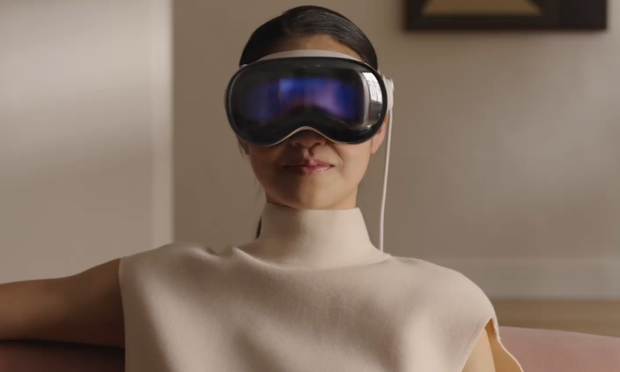Apple Reportedly Slashes Vision Pro Glasses Production Forecast

Apple has apparently scaled back its production forecast for its mixed-reality headset amid manufacturing troubles.
Also on hold: plans for a more affordable version of the $3,500 Vision Pro headset, the Financial Times (FT) reported Monday (July 3). That report, which cites multiple sources with direct knowledge of the device’s production, says that the complexity of the headset and manufacturing difficulties are behind the delays.
According to the FT, sources close to Apple and Luxshare — the company assembling the Vision Pro — said the plan is to make under 400,000 units next year, a drastic step back from a previous internal sales goal of 1 million units in the first year.
PYMNTS has contacted Apple for comment but has not yet gotten a reply.
“A lot of this is normal growing pains,” Jay Goldberg, founder of tech consultancy D/D Advisors, told the FT. “This is the most complex consumer device anyone has ever made.”
Ha added that said the steeper-than-anticipated $3,500 price point already suggested that Apple had factored in the cost of production inefficiencies.
“Someone has to pay for that,” said Goldberg. “I think Apple went into this with a lot of ‘bad yield’ built into the model. There is a lot of technology in the Vision Pro and they knew it would take a while to scale up. Apple knows they won’t make money on this in the first year.”
As noted here last month, while Apple’s fan base — and anyone else who can afford a $3,500 piece of hardware — may be anticipating the product’s launch, it is too early to tell if the consumer population at large will be as enthusiastic.
“Given the similar concerns about high consumer costs for Vision Pro’s predecessors — and their relatively low costs in comparison to Apple’s offering — the wearable’s prospects for future success are murky, even though many of the augmented reality innovations stemming from these wearables could have real-world benefits,” PYMNTS wrote.
And previous work here has argued that years of hype and billions of dollars in research have not convinced the public to view augmented reality (AR) and virtual reality (VR) goggles as a viable consumer product.
It’s core to the wider discussion about how consumers will (or won’t) want to tap into the metaverse. As PYMNTS’ CEO Karen Webster argued:
“Most people — as in mostly all of them — don’t want to give up the physical world to live mainly via avatars in a virtual one. Even though most — as in mostly all of them — very much want to use technology to improve their interactions with people and businesses in the physical world where they live right now.”

